The main courtyard of Sewri fort.
On a lazy weekend morning after a sumptuous brunch we suddenly decided to go to Sewri Fort or Sewree Fort. Did it live up to our expectations or not, read on.
The Sewri Fort is very interesting in many ways. Its strategic location, its small size, its architecture etc.
First a bit of history on one of the eight existing forts of Mumbai.
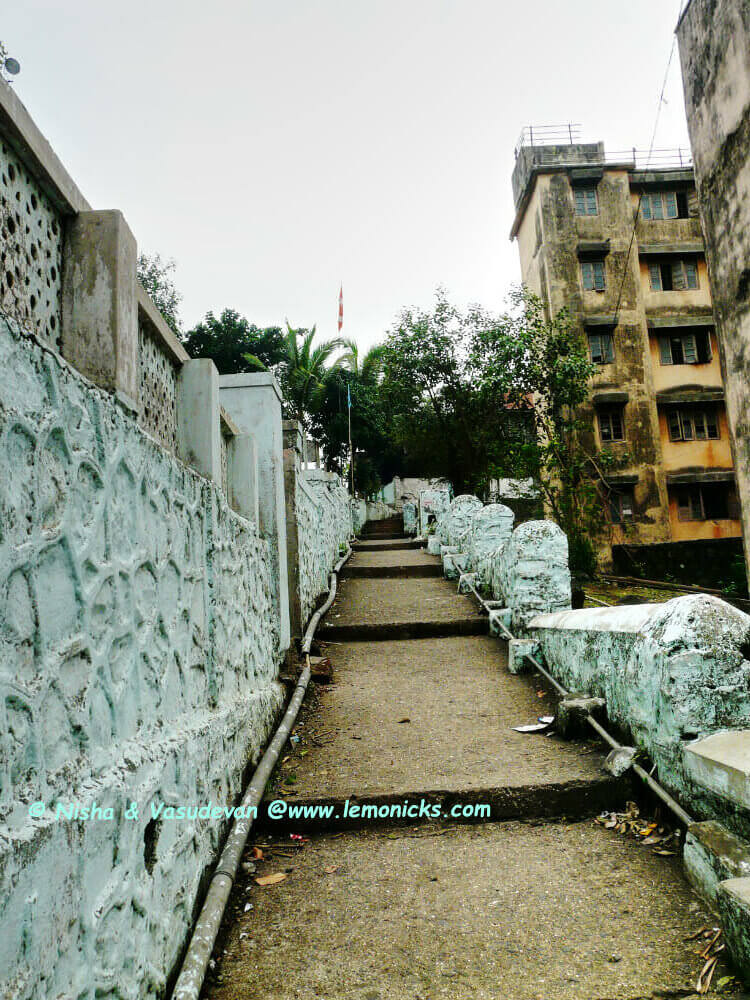
History of Sewri Fort
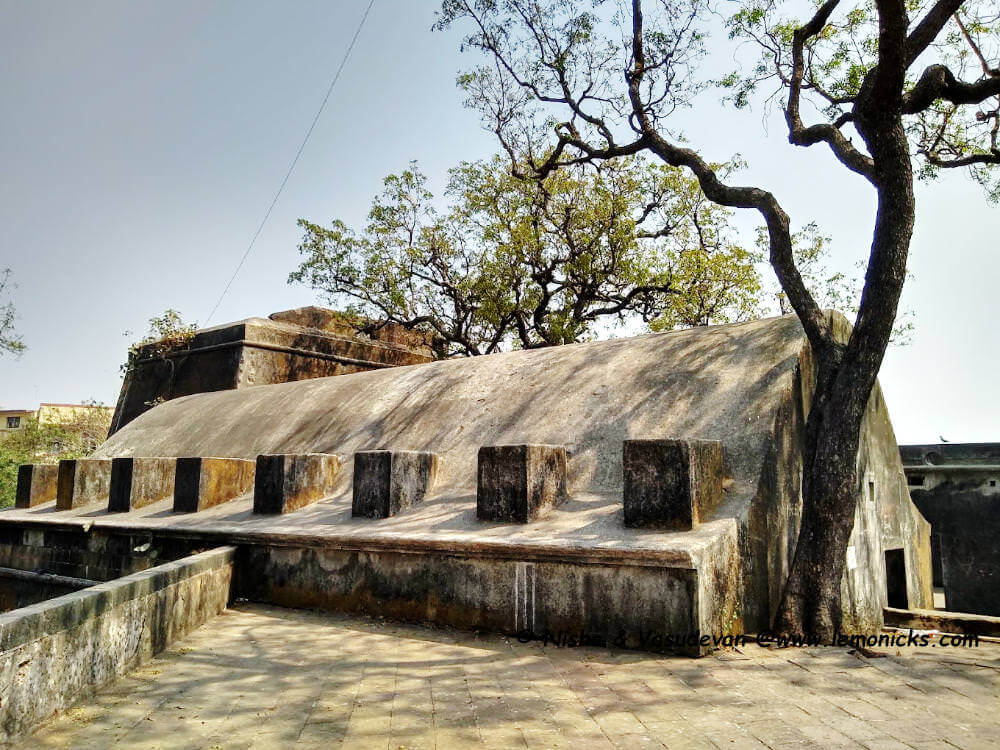
Bombay, now Mumbai, was an important stronghold for colonial powers. The Siddi general Yadi Sakat and his army, the Portuguese and the British, the city has experienced them all. Also known as शिवड़ी किल्ला in Marathi, this fort in Mumbai was built by the British for security purposes. It was one of the 3 forts constructed by them on the eastern shoreline. Built in 1680 it was to be served as a watch tower and first line of defense against the Portuguese who had held the land across Mithi River (called Salsette Island).
Sewri Fort was used as a check post, a watch tower and was managed by a subedar and around 50 sepoys. It also had around 8-10 canons.
Later, as threats from the sea decreased, the importance of the Sewri Fort too gone and it became a godown of the Mumbai Port Trust. Not to mention, it was in a bad shape when a few years back the Maharashtra State’s Department of Archaeology and Museums took it over for its upkeep and renovation and classified it as a Grade I structure.
Architecture of Sewri Fort
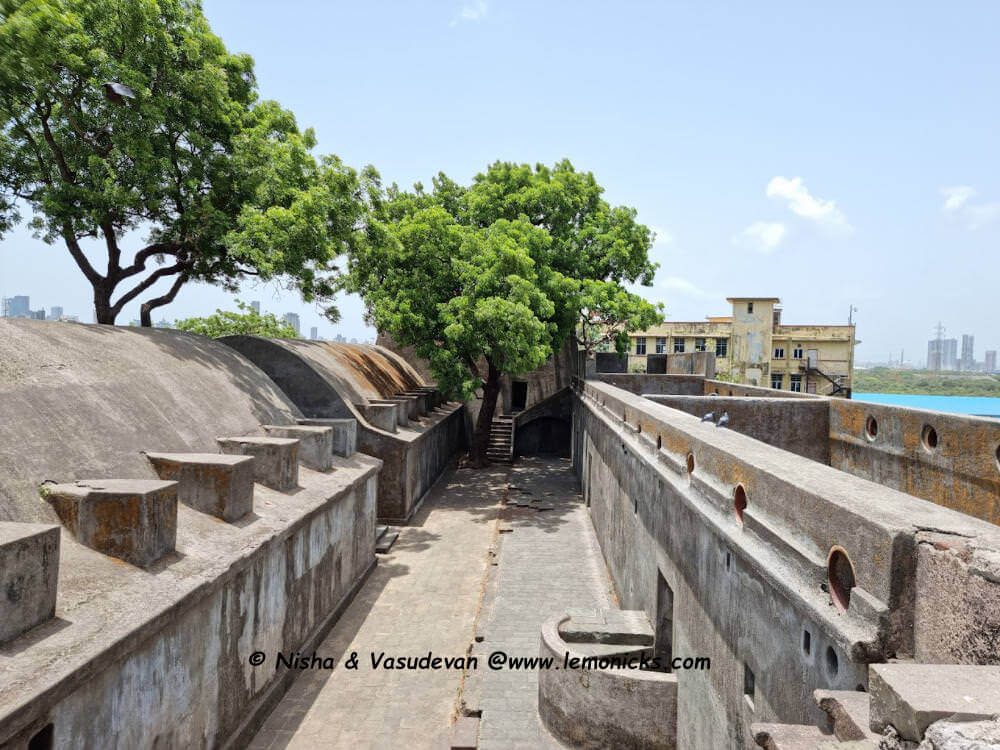
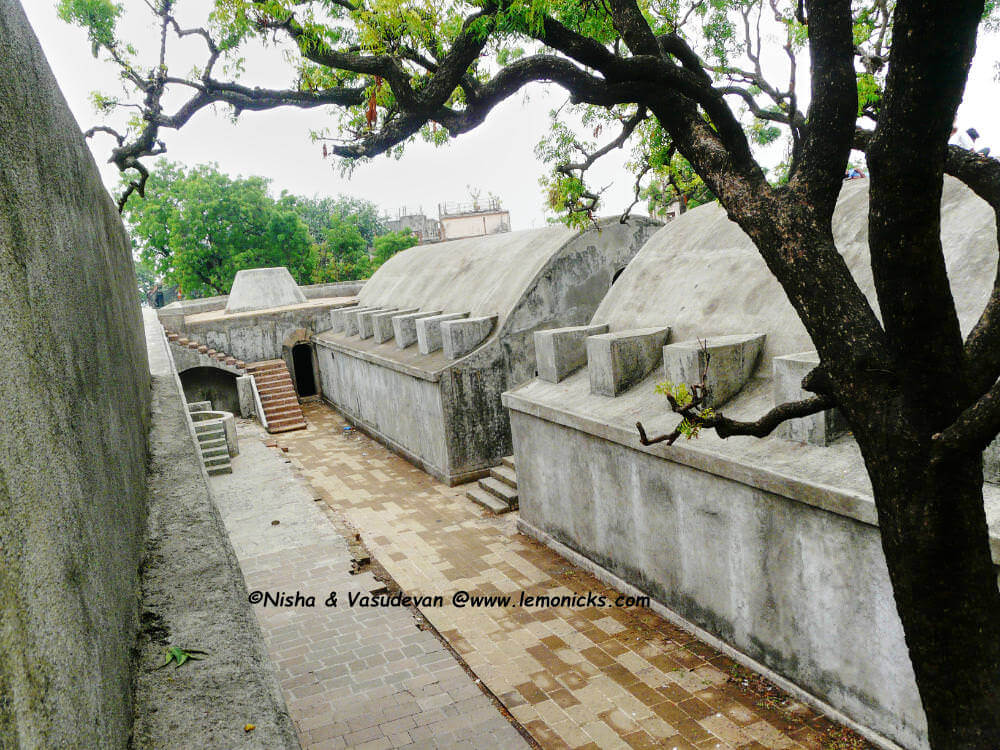
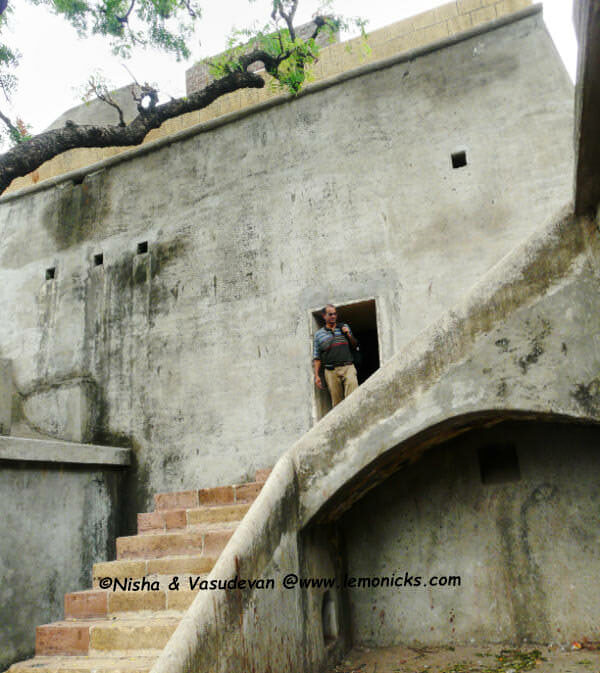
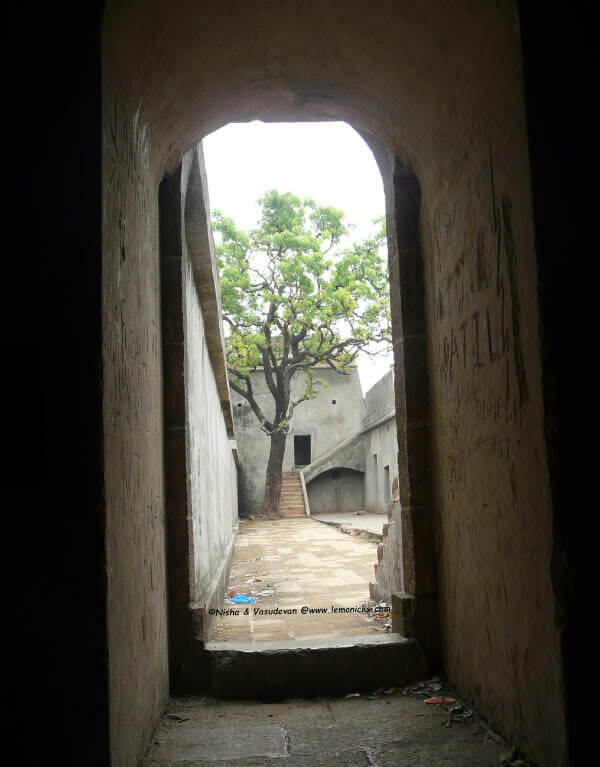
The Sewri fort is built on a high hill from rocks quarried from its hillside and is surrounded by land on 3 sides. The 4th side is a cliff that drops down into the sea and the mangroves.
The entrance to the main structure of the fort is through a stone doorway which is dark, into an arched foyer. Only when you enter the courtyard through the main entrance, you see a design reflecting the insides of the fort. It does look like a fort albeit very small.
As a popular defense mechanism, this fort also has main area at right angles to the main entrance so the enemy doesn’t see directly what is in its store. They must have learnt the tricks from the earlier invasions.
The courtyard or the central court is around 60 feet long with small rooms or domes on either side. It also has a lone tree at one end. On one side are domed structures, which were perhaps guard rooms or storage rooms or maybe for keeping prisoners of war. On the other side you can see out through windows of a room which is roofless. The space between the outer walls and the walls of the internal structures form the second ring of defense as in case of many forts.
A variety of stones are used to build the Sewri Fort. Dark grey almost black basalt, dark green rocks, rhyolite are some of them. Perhaps it looked beautiful when it was built.
The other side of Sewri Fort

Besides locational advantage, we didn’t see anything that could attract tourists or locals to this fort. It is located next to the dargah, named as Jalal Shah Murad Shah Baba Dargah. Still people including locals are not aware of its existence. They can easily guide you to all neighboring places like Sewri Jetty, the automobile service centers, the Port Trust Office, the dargah but this Fort.
We could not see a single signboard from Sewri station till this place guiding people. Even after reaching the fort there’s nothing which indicates that this is the Sewri Fort.
Unfortunately the fort is in a dilapidated condition.
The place is deserted and I was wondering if it has become a hangout for petty crimes. When we were clicking photos, one of them saw us and alerted others. The whole thing was so scary that we hurried up and left the place without any delay.
Vistas from Sewri Fort
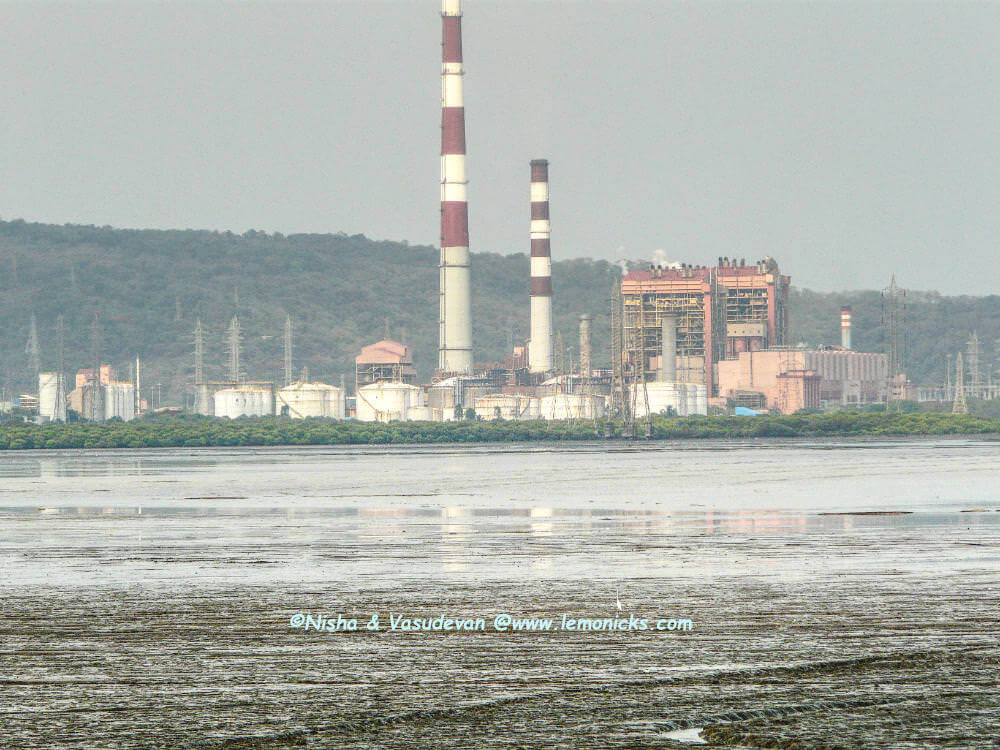
The fort is atop a quarried hill in island of Parel overlooking the Mumbai harbour and the Sewri mudflats. Although the Sewri Mangrove Park is close by & you get a great view of the creek and the flamingos, you get to see different views from the Sewri Fort, depending on the direction you are looking at. The high-rise buildings, the industrial units and the Sewri Jetty, the dargah next door and the flamingos.
It is a vantage point on the eastern shoreline.
How to reach Sewri fort
The fort Sewri is located right next to Jalal Shah Murad Shah Baba Dargah.
There are hardly any signboards guiding people from Sewri station to this place. Even after reaching the fort there’s nothing which indicates that you have reached your destination.
By Train:
Get off at Sewree station (E), on the harbour line and walk towards north end of the platform as there is no exit from the south end for going to the eastern side. Cross the main road (Mahul Road) through railway crossing, take the Sewri Koliwada Road opposite. Continue on this road and take the left of a ‘Y’ road. This will take you to a T junction where this road meets the Sewri Fort Road. Colgate-Palmolive factory is also nearby.
Next to the factory you can see the stairs going up. These steps lead to both dargah and the fort.
Total walking time is less than 10 minutes.
By Road:
Take the IMAX Wadala road and take the turning for Sewree. If you’re coming from Chembur side, there is a left turn after the salt pan road. Continue along this road until you reach a crossroad near Godrej Foods. Take a right and go straight along this road (Mahul Road) until you reach Sewree Station.
If you’re coming from town or from the Western side, take R.A Kidwai Marg and cross over from West to East when you reach Sewree station. Once you are at Sewree station East, directions are the same as above.
By Bus:
Sewree Bus depot is located in Sewree West and cross over to eastern side. Take any bus that ends at P.Thakeray Udyan/Sewree depot.
Tips on Sewri Fort
1. The roads are full of oil soaked dust and not very clean.
2. Ask for शिवड़ी किल्ला and not for Sewri fort. We asked the policemen on patrolling duty the directions for fort and in turn he asked a rag-picker. Thinking the boy would not understand ‘fort’ I asked for ‘killa’. Even before he could utter, the policeman said, “Achha, killa jana hai? Idhar se jao (Do you want to go to killa? Go from this side.)”. I immediately realized my mistake.
3. Bring along water and some food, there is nothing in the immediate vicinity, except at Sewri station.
4. If you are interested in seeing the salt pans as well, walk northwards on the Mahul road.
5. If you are in the right season (October to March), you can watch hundreds of migratory birds flamingos flocking the Sewri mud flats. Do bring along a good pair of binoculars if you plan to see the flamingos.
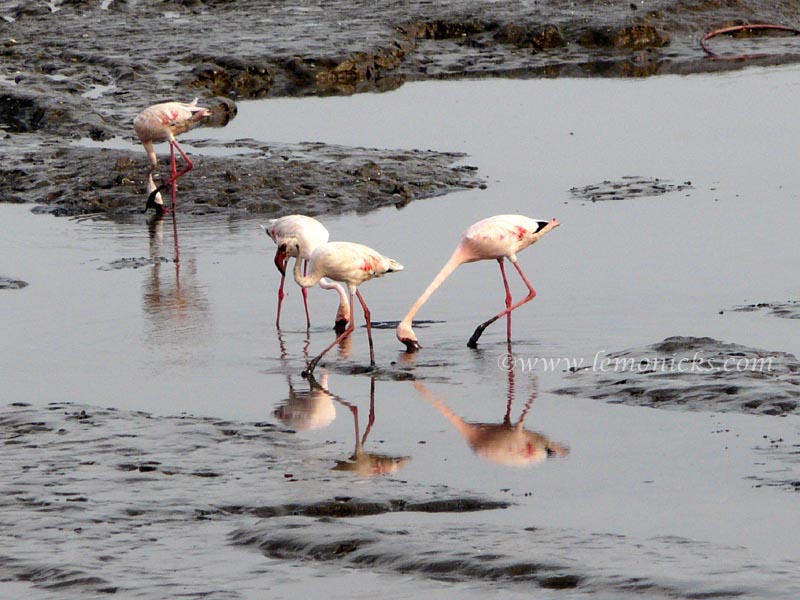
FAQ on Sewri Fort
What is Sewri famous for?
In 1996, the mangrove swamps of Sewri were declared a protected ecology. Flamingos from other parts of India come to these mangroves to breed. The coastal area of locality includes a wetland, the Sewri mudflats. The flamingos arrive at the mudflats from the months of October to March every year.
Which is the oldest fort in Mumbai?
The Bombay Castle, also known as Casa da Orta (Orta’s house), is one of the oldest defensive fortification structures in Mumbai. A Portuguese nobleman Garcia de Orta had built a Manor House and then from year 1554 until his death in 1570, leased the island of Bombay.
Which is the smallest fort in Maharashtra?
Tung fort is one of the many hill forts near Pune in Maharashtra. It seems to be the smallest fort.
How many forts are there in Mumbai?
Mumbai has a total of 8 forts. They are :
Castella De Aguada. It is also called Bandra Fort and is one of the most visited Mumbai tourist places.
Worli Fort.
Sion Fort.
Mahim Fort
Sewri Fort.
Fort Bassein.
Fort St George (Fort Mumbai area).
Versova fort.
Mazagaon Fort.
Which fort in Mumbai is British?
Worli Fort. Built on Worli hill by the British around 1675, the Worli Fort overlooks Mahim Bay. It has a bell tower which is visible from the Arabian Sea. The fort also has three platforms for canons.
Timings
Sewri Fort can be visit during 06:00 AM to 06:00 PM.
Entry Fees
There is no entry fee to see the Sewri Fort.
Photograph Copyright
All photographs used in this article belong to the owners of this website www.lemonicks.com unless otherwise specified. Copying or using them without explicit permission is prohibited and will amount to copyright infringement.
If you want to travel places with us, we invite you to join our feed or Facebook travel page.
P.S.- This article, Sewri Fort, Mumbai belongs to Le Monde, the Poetic Travels, one of the top Indian Travel Blogs, published by the traveling couple bloggers, Nisha & Vasudevan. Reproduction without explicit permission is prohibited. If you are viewing this on another website other than the RSS feed reader or www.lemonicks.com itself, then that website is guilty of stealing our content. Kindly do us a favour by letting us know via Contact Us. Thank you.
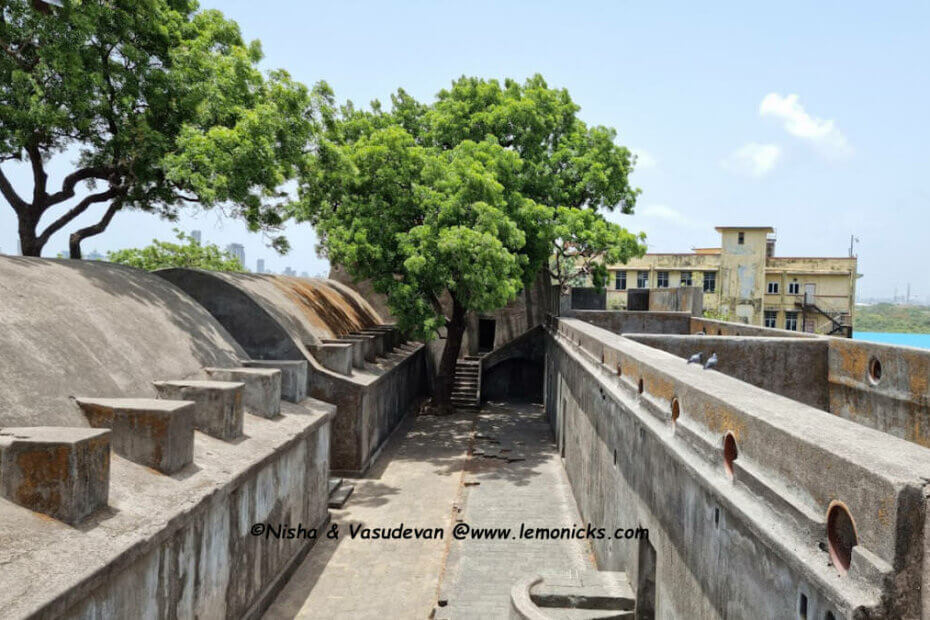

The Flamingos look really delicate and beautiful. Will wait for that post.
Whoa! This here is a lot of content! Thanks for voting. Love the amazing amount of content on your blog.
Cheers,
JPK
Thanks for the information about Sewri. To me although in ruins, the fort still looks strong.
Mridula,
Yes, they are.
JPK,
You are welcome. Keep coming.
PNS,
It is all recently renovated with cement & bricks. The perception (big stones, mud cementing etc) we generally have for any old fort is missing here.
Keep coming.
So many of our historical monuments are neglected, seems we have scant regard for our heritage and treasures of our past.
Oh I would have loved to see the flamingos. Also, the shots you took of the fort made it look like a place which would be nice to explore. I do know what you mean though about a place being so run down and vacant that it is not appealing (even to explore). Thanks for sharing the pics!!
This ia what traveling is all about – sometimes you find beautiful places, sometimes you are a little bit disappointed… but disappointement often leads to better finds 🙂
This is the case with most of the tourist spots in Mumbai.
When we went to the Elephanta Caves, the stink was so bad that we felt like rushing back to the boat.
I wish to visit one day – a wish pending since years.
And Re.: photographs
Excellent shots – I love the way it is clicked. Beautiful.
As a fort, it is disappointing. Especially since we have such beautiful forts in India. You write it was built by the British and not Indian rulers, and was that why it is not like the forts we see in Rajasthan or even one closer home the Golconda Fort?
Thanks for the information about Sewri.
Namita,
Very true.
Anjuli,
The flamingos are up here. For more photos pls check the Facebook.
It didn’t look like a typical historical fort, the renovation is done with bricks & cement and it has a modern architecture, possibly because it was built by the British.
Zhu,
I like your pov and it happens most of the time. 🙂
Zoe Zachs,
Ha Ha Ha…. we had also thought so. Not only Elephanta caves, the stink is in all the caves… the readymade public urinals.
Hobo,
Thank you very much for your appreciation.
Radha,
Yes, I think that is the reason it didn’t look like a typical historical fort we are used to see. It has modern design made of cement & bricks and very small in size.
SM,
Welcome here. And keep coming.
Didn’t even know that Sewri had a fort. hopefully, the flamingos made up for what the fort didn’t deliver! 🙂
N,
I knew about the fort but not this kind of. I had the illusion of big Indian forts.
Yes, Flamingos made it possible. 🙂
Although I’ve been to Mumbai a couple of times, I’ve never spent a lot of time exploring Sewri Fort. On our last trip, we did take a drive to see the flamingos but didn’t bother spending time exploring the fort. Looks like we made the right decision!
Ha Ha
You didn’t miss anything then. 😀
The thing with many historical places in India is – they’re not well maintained and neglected to the extent that they become isolated and like you mentioned, a site for crimes and homeless people to base themselves at! Sorry to hear about Sewri Fort being another such disappointment – maybe what it needs is for the government to maintain it better? Or at least some some attention to restoring and cleaning it, is is after all, a part of our history and made hundreds of years ago, right?
Yes Medha.
That’s the problem here.
When I visit some other country, I see how well they maintain and promote tourism.
But here nothing like that. Few years back authorities tried to revive and plaster the walls but they did a shoddy job.
Too bad to know that the fort is no longer in good condition. The historical significance is being wasted though and it would’ve been more interesting if it was properly maintained.
Absolutely !
As a citizen we can only raise our voices and let the authorities know.
Wish they do something soon.